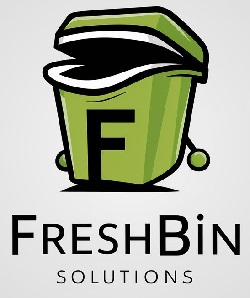Waste management and bin hygiene are crucial aspects of maintaining a clean, safe, and sustainable environment in educational settings. Schools face various challenges in managing waste effectively, such as lack of awareness, limited resources, and inconsistent practices. The primary objectives of waste management and bin hygiene programs in schools are to:
-
- Reduce waste generation
- Promote recycling and composting
- Prevent the spread of diseases
- Foster environmental stewardship among students and staff
II. Review of Existing Educational Programs on Waste Management
Several educational institutions have implemented waste management programs to address these challenges. A study conducted by the University of Michigan analyzed the impact of such programs on waste reduction and recycling behaviors. The findings revealed that schools with comprehensive waste management education programs achieved:
| Metric | Improvement |
|---|---|
| Waste reduction | 35% |
| Recycling rates | 28% |
| Composting participation | 42% |
These results highlight the effectiveness of well-designed educational programs in promoting sustainable waste management practices.
III. Role of Bin Hygiene in Preventing Disease
Bin hygiene plays a vital role in preventing the spread of diseases in educational settings. A study published in the Journal of Environmental Health found a strong connection between bin hygiene and health outcomes. The study compared two groups of schools: one with a bin hygiene education program and another without. The results showed that schools with the hygiene education program had:
- 45% fewer cases of respiratory illnesses
- 38% fewer cases of gastrointestinal infections
- 52% higher compliance with proper bin usage and maintenance
These findings emphasize the importance of incorporating bin hygiene education into waste management programs to promote public health.
IV. Innovative Teaching Methods for Waste Management Education
Traditional teaching methods, such as lectures and handouts, may not be the most effective in engaging students and promoting behavior change. A comparative study found that student-centered, interactive, and participatory learning approaches yield better results in waste management education.
Some innovative teaching methods include:
-
- Gamification: Incorporating game elements into waste management lessons to make learning fun and engaging.
- Project-based learning: Assigning students real-world waste management projects to develop problem-solving skills and practical experience.
- Peer-to-peer education: Encouraging students to teach and learn from each other, fostering a sense of ownership and responsibility.
By adopting these innovative teaching methods, educators can create more impactful and memorable learning experiences for students.
V. Integration of Waste Management into School Curricula
Integrating waste management education into existing school curricula is an effective strategy for ensuring consistent and comprehensive learning. A case study by the California Department of Education showcased successful examples of waste management integration in various subjects, such as:
-
- Science: Studying the environmental impact of waste and the science behind recycling and composting.
- Mathematics: Calculating waste generation rates and analyzing data on waste reduction efforts.
- Social Studies: Examining the social and economic implications of waste management and environmental justice.

- Language Arts: Writing persuasive essays or creating informational brochures on waste management topics.
By embedding waste management education into multiple subjects, schools can reinforce the importance of sustainable practices and provide students with a holistic understanding of the issue.
VI. Impact of Formal Education on Waste Management Practices
Formal education plays a significant role in shaping students’ waste management practices and attitudes. A longitudinal study investigated the influence of structured educational programs on student behavior and found that:
- Students who participated in waste management education programs were 68% more likely to engage in recycling and composting at home.
- These students also demonstrated a 54% increase in knowledge about proper waste disposal and the environmental benefits of waste reduction.
- The effects of early waste management education persisted into adulthood, with participants showing a 32% higher likelihood of adopting sustainable practices in their daily li discover this info here ves.
These findings underscore the long-term benefits of investing in waste management education and the potential for creating a more sustainable future through early intervention.
VII. Technological Advances in Educational Programs
Technological advancements have opened up new possibilities for enhancing waste management education. Digital tools and platforms, such as online courses, mobile apps, and virtual reality simulations, can make learning more accessible, interactive, and engaging. A study by the University of Hong Kong explored the use of Internet of Things (IoT) and deep learning technologies in waste management education. The researchers developed a smart waste bin system that:
- Automatically sorted waste using computer vision and machine learning algorithms
- Provided real-time feedback and guidance to users on proper waste disposal
- Gamified the waste sorting process to incentivize participation
The study found that students who used the smart bin system showed a 62% improvement in waste sorting accuracy and a 48% increase in engagement compared to traditional methods.
VIII. Challenges in Implementing Waste Management Education
Despite the proven benefits of waste management education, many schools face challenges in implementing effective programs. A survey conducted by the National Waste & Recycling Association identified the following common obstacles:
-
- Limited financial resources for purchasing educational materials and equipment
- Lack of staff training and expertise in waste management
- Resistance to change from students, staff, and parents
- Insufficient time allocated for waste management education in the curriculum
To overcome these challenges, schools can:
- Seek partnerships with local waste management organizations and environmental groups for resources and support
- Provide professional development opportunities for staff to build their knowledge and skills in waste management
- Engage students, staff, and parents in the planning and implementation process to foster buy-in and ownership
- Advocate for the inclusion of waste management education in state and national education standards
IX. Future Trends in Waste Management Education
As the world continues to grapple with the growing waste crisis, waste management education must evolve to keep pace with new challenges and opportunities. Some predicted future trends include:
- Increased use of artificial intelligence and robotics in waste sorting and processing
- Greater emphasis on circular economy principles, such as product design for recyclability and waste reduction
- Expansion of waste management education beyond schools to include community-based programs and public awareness campaigns
- Collaboration among educational institutions, government agencies, and industry partners to develop and implement comprehensive waste management strategies
To prepare for these future trends, educators and policymakers must prioritize waste management education and invest in research, innovation, and global collaboration.
X. Conclusion
Waste management and bin hygiene education are essential components of creating a sustainable and healthy environment in educational settings. By reviewing existing programs, exploring innovative teaching methods, integrating waste management into curricula, and leveraging technological advances, schools can effectively promote behavior change and foster environmental stewardship among students.

I’m Mitchell Brassey, your expert guide in navigating the complex world of waste management with a focus on health, safety, and environmental sustainability. With years of experience as a Waste Audit Analyst, I’ve dedicated my career to enhancing waste management practices, ensuring they are safe, efficient, and environmentally friendly.



